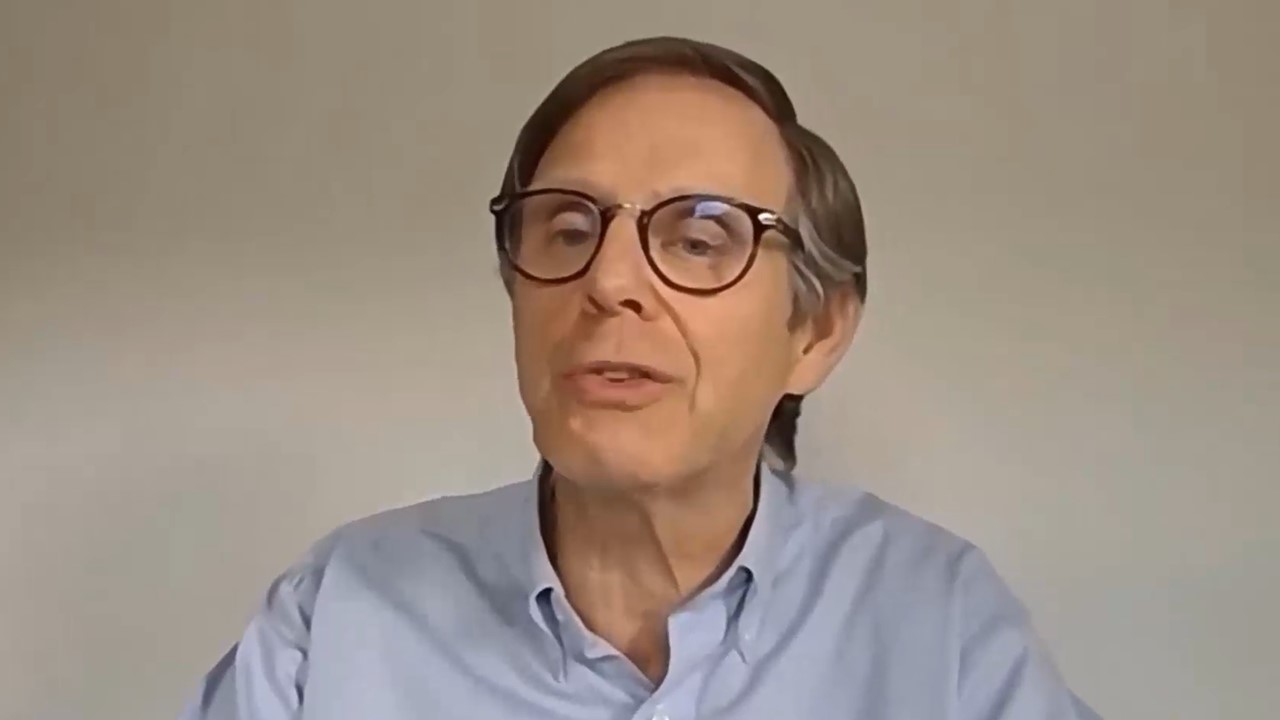Shipping needs to look back to the 19th Century when technological developments and change were more commonplace than today. Talking during a press conference organised by German trade show SMM, which had just announced a Covid-19 postponement until February 2021, Martin Stopford, President Clarksons Research took the opportunity to talk about the combined impact of the Covid-19 related recession and the need to decarbonise the industry.
Using economic models that he has used previously (he joked he has seen 8 cycles in his career so far) he looked at what could happen with the coronavirus and then with the climate challenge, as we still need to look at what needs to be done. In doing so he pointed periods of rapid technological change, compared to the last 50 years, which has seen shipbuilders build the same kind of ships, just bigger.
Three scenarios
Stopford pointed to about 60 years of world seaborne growth with minor interruptions until today as the response to the pandemic hits. He showed three potential scenarios to look at the coronavirus impact, and then climate change afterwards: because as he noted, the important thing is to actually look at what we need to be doing about the climate change issues as we move beyond this current situation.
The first scenario assumes society in general goes through the patterns set by China and see business back to normal fairly quickly. Logistics will run as normal in a couple of year’s time, world trade growing at 3.2%, which is the 50-year average. His second scenario has a couple of bad years, where trade picks up, grows at 2.2%, with 20bn tonnes of trade by 2050.
The worst scenario, the third, shows problems. Trade goes down by 17% by 2025, which is based on what happened in the 1980’s oil trade collapse. This third scenario suggests trade grows at 0.7%, noting that 40% of current cargo is fossil fuels, which shipping may not be carrying in 2050.
Looking ahead
Regardless of this, Stopford sees the need to continue looking at technology solutions as has already been happening in recent years. “I think it is important that shipbuilders and equipment suppliers start thinking right away about I4 (4th industrial revolution) technology and emissions, and it is important that investors get used to think about continuous change, he said. “We have got used to building the same ship over and over again. just a bit bigger.”
He took to history notably the move from sail to steam and then oil bunkers, to look for examples when shipping has been accustomed to change.
“There have been times in the past, like in the 19th century, when technology changed every year, and the same is going to be true in the next 20 or 30 years, so we should start now. For a period of about 40 years you had continuous technical change. You did not have a fantastic steam engine in 1866, that engine continuously improved, the same thing with the diesel engine”.
Three waves of change
The IMO already has set a targets to decarbonise shipping by the end of the century, and by at least 50% by 20250 based in 2008 levels.
Stopford used this objective in the second of his post Covid-19 scenarios and pointed to the fact that ships built in the last shipbuilding boom (2008 to 2014) will have to be replaced by the end of this decade.
But the problem remains that much of the innovative technology that may be suitable has yet to be tested sufficiently at sea.
He pointed to a looming gap in deliveries in his modelling of the future and suggested this could be when there is speculative ordering and support to ensure the innovative solutions can be tested and matured. It would also support the broader technology and shipbuilding industries as they need to evolve. However he also pointed t the inevitable cost increases of these new solutions, a point also made by another panelist during the press briefing, Dirk Lehmann, managing director Becker Marine Systems and vice chair of SeaEurope, the Shipyards’ and Maritime Equipment Association.
The changing shape of these newbuilding deliveries would come in three waves said Stopford. Firstly industry adapts what is currently being used, but enhancing and optimising existing diesel powered vessels. The second wave would see gas and hybrid vessel deliveries increasing and then waning while the third and ultimate wave will emerge where Stopford points to increased capabilities with fuel cells electric and even raises the question about nuclear power emerging again.
It is a very steep hill to climb, he said, pointing also the growing question of whether the industry has relationships with the cargo owners (who will no doubt be asked to pay), and the skills both ashore and onboard?
Video clips courtesy of SMM Press Office.































